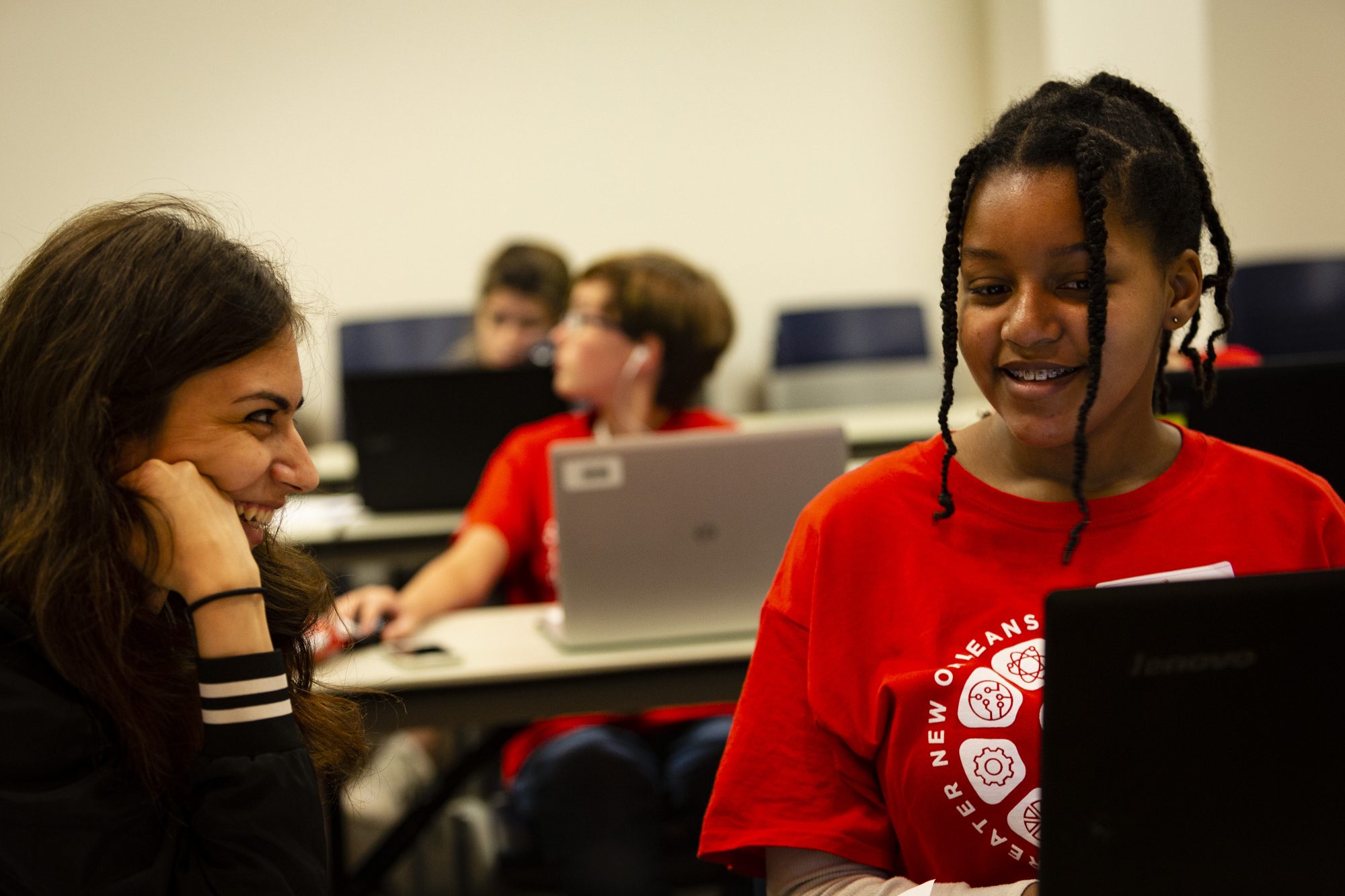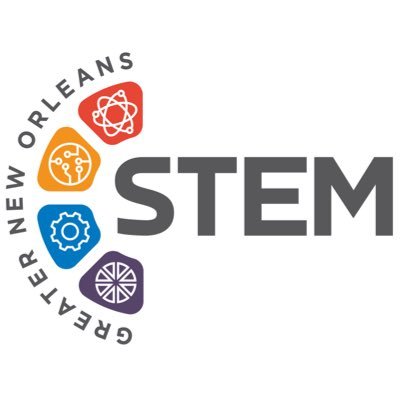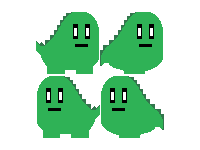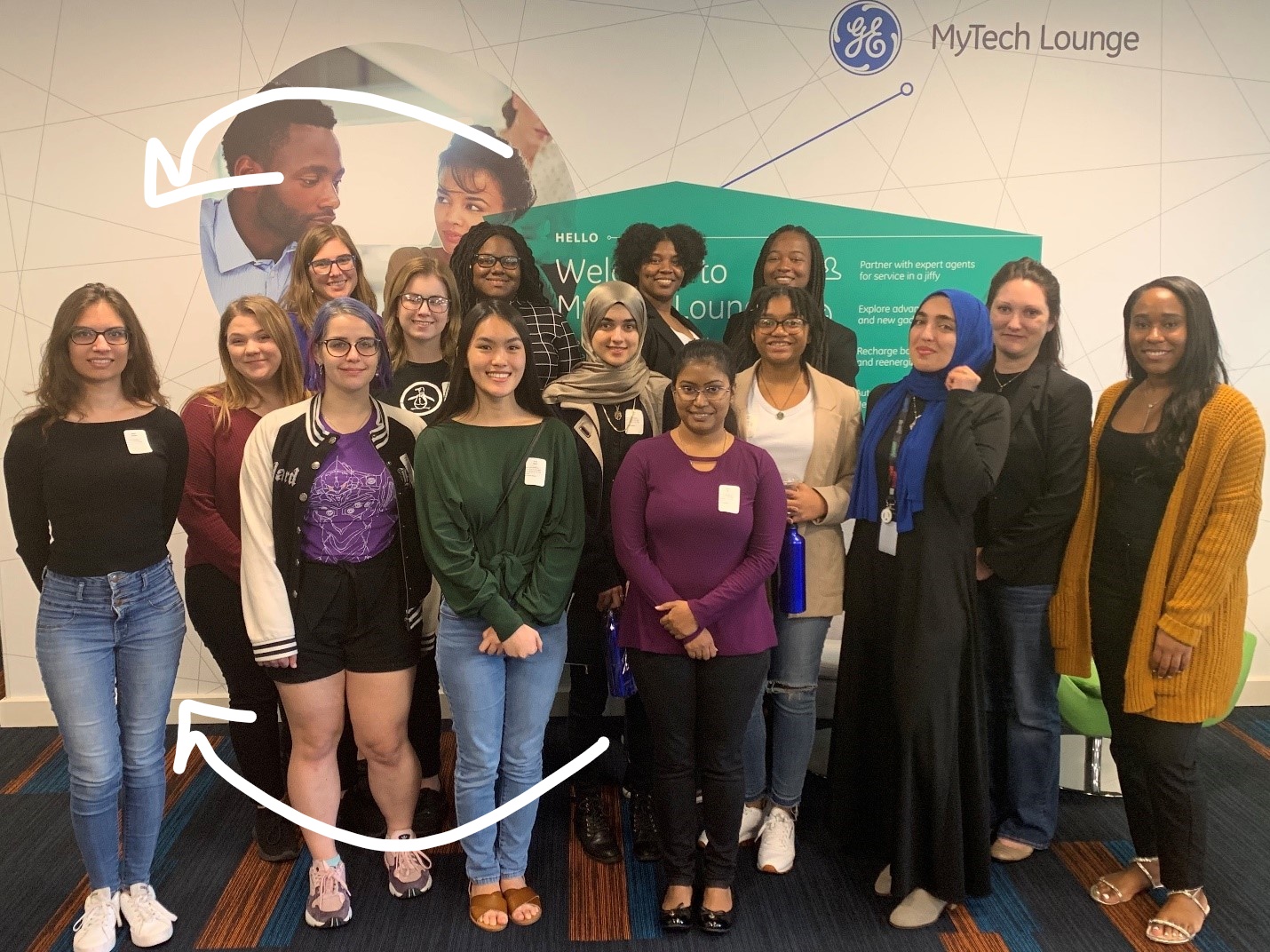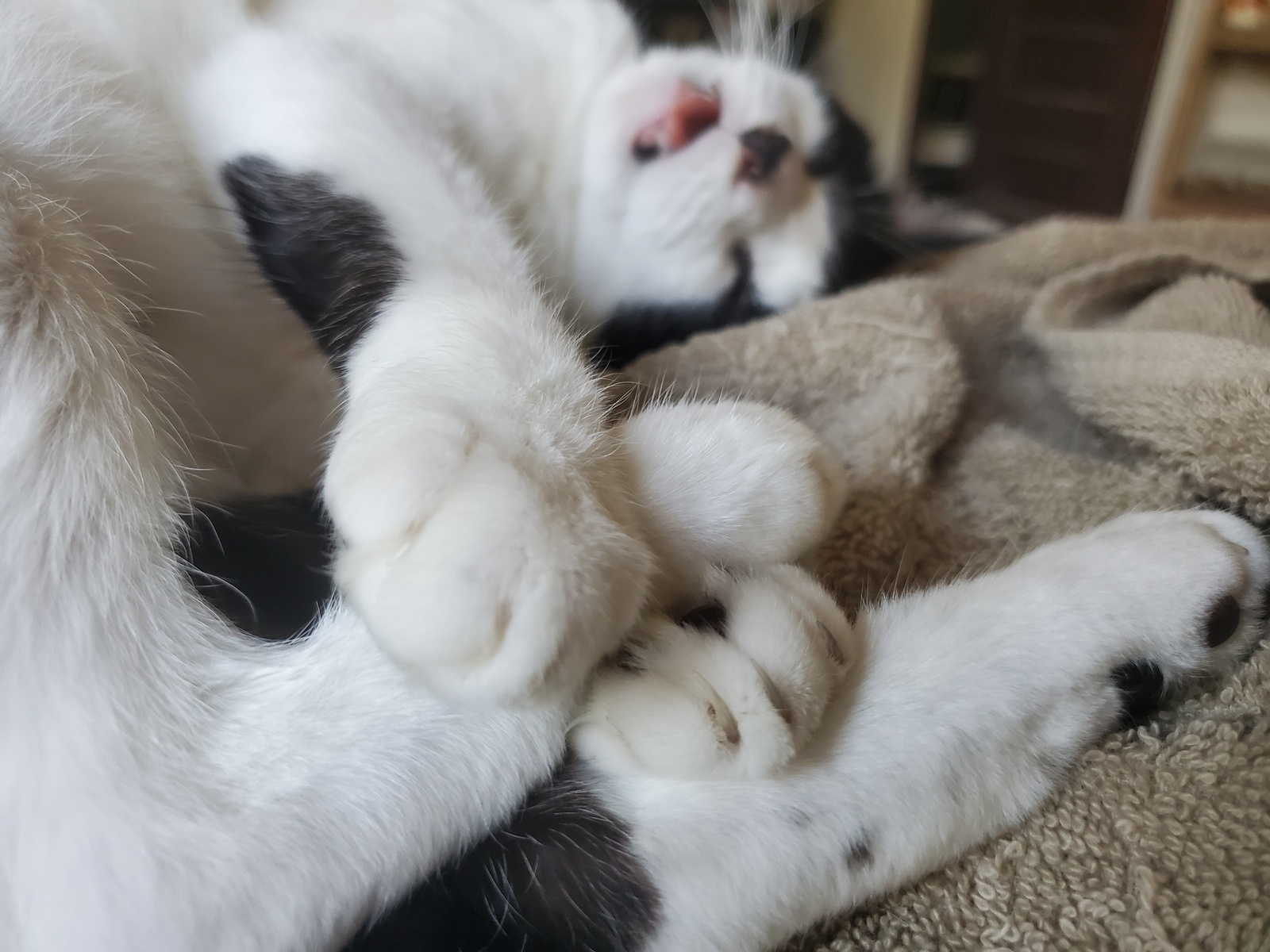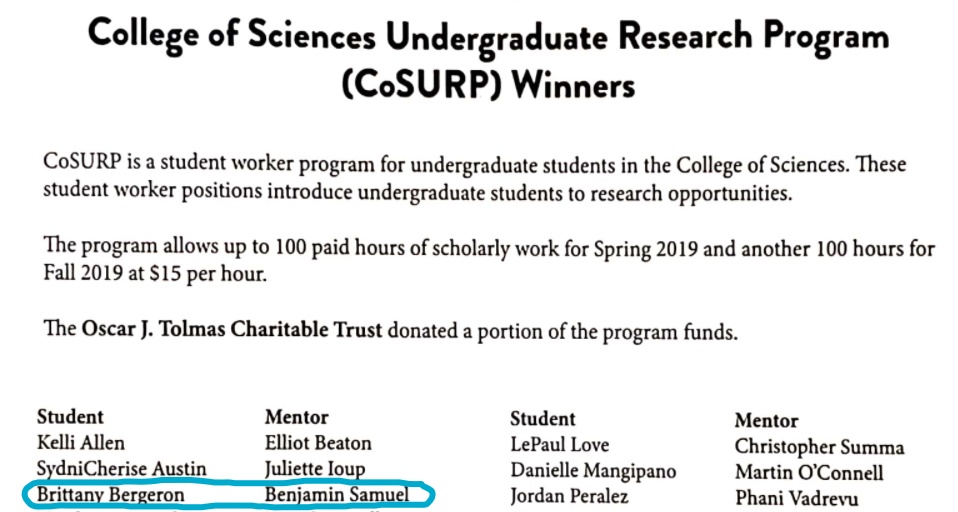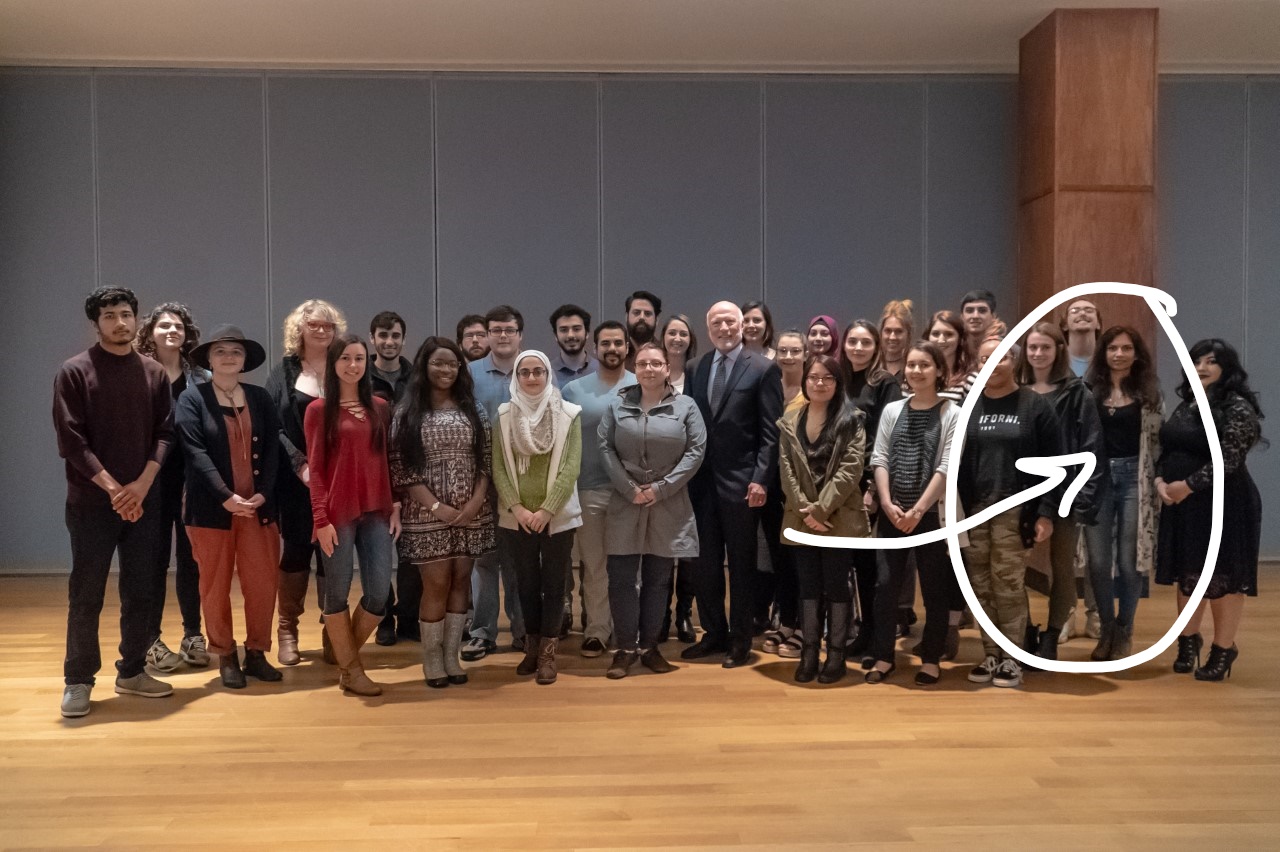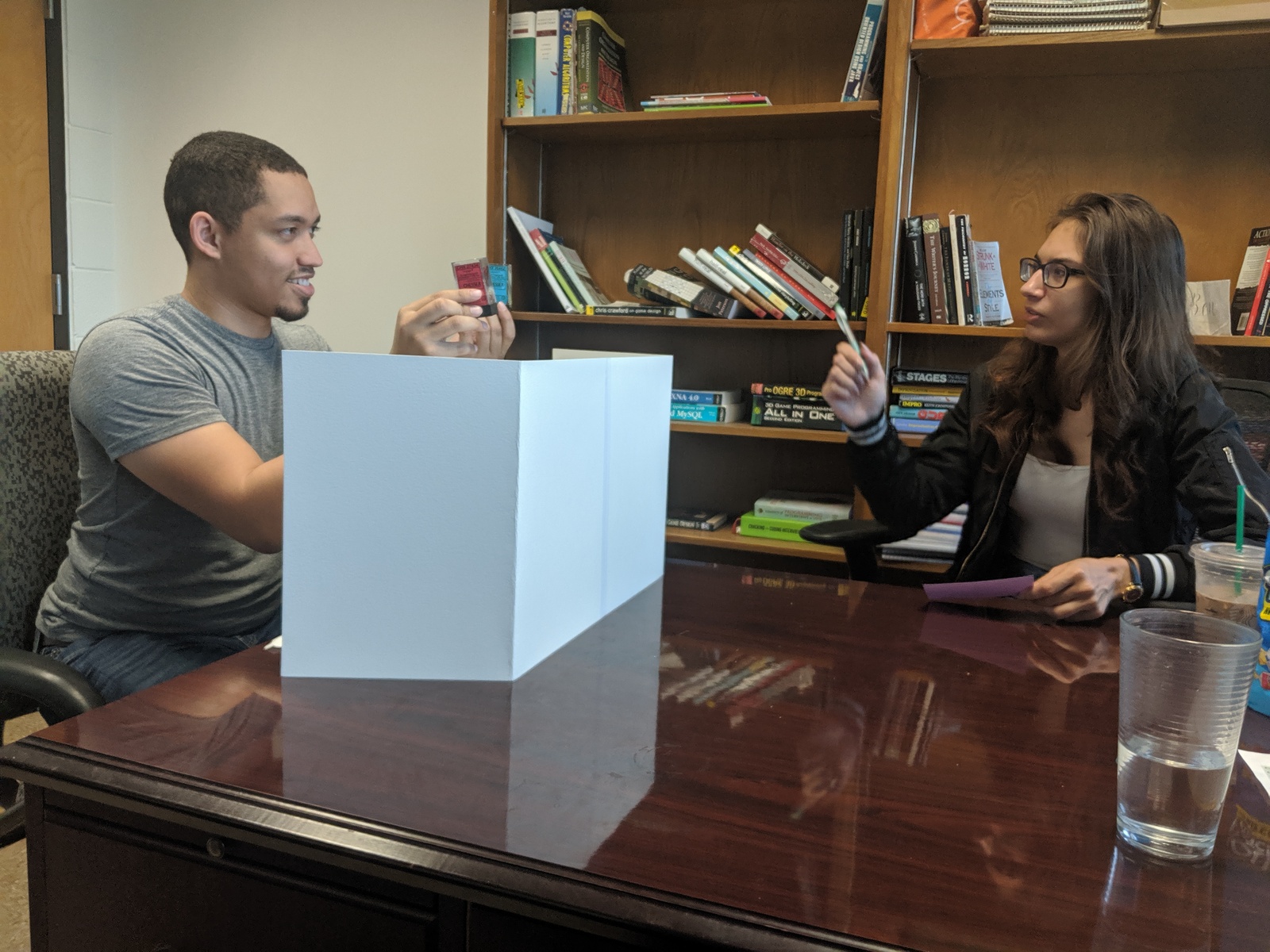
My Tolmas Scholar award brought me invaluable experience during an internship working with Dr. Benjamin Samuel and Extell Farve. The aim of this project was to invoke empathy in the player by having them nuture an artificially intellegent hero's quest. The player is in control of environmental elements such as enemies, resources, and non-player characters.
My work began with rapid paper prototyping and code iteration. The successful mechanics were integrated to Phaser2 game engine using JavaScript, but we soon converted to C# and migrated the project to Unity as the scope became more ambitous. Our team would meet weekly to discuss progress, share feedback, troubleshoot, and set goals for the next phase. Agile and Scrum development practices helped keep things moving smoothly.
Inverse RPG was still in progress when I left the University of New Orleans. I presented the progress and methods at a research symposium (InnovateUNO) to the public and a group of judges from the computer science department. The poster created for the project can be viewed (see next block).
- Organization: rapid prototyping and agile workflow
- Effective Documents: AI decision trees, logic diagrams, and technical descriptions
- Problem Solving: debugging, error handling, testing
After completing my internship with Dr. Samuel, I presented my results at the InnovateUNO Research Symposium. Students awarded with student worker positions have the option to present their work to the public and a board of judges. This helps the community gain insight to the research done at the university while allowing professors to learn more about their colleagues' work.
Near the end of the internship, I synthesized the information taken from the project and documented the development process. This was translated into a poster (see outcome tab) displayed at InnovateUNO. Students explained their projects to spectators and judges passing by.
Here is the poster I made! (for desktop click to expand)
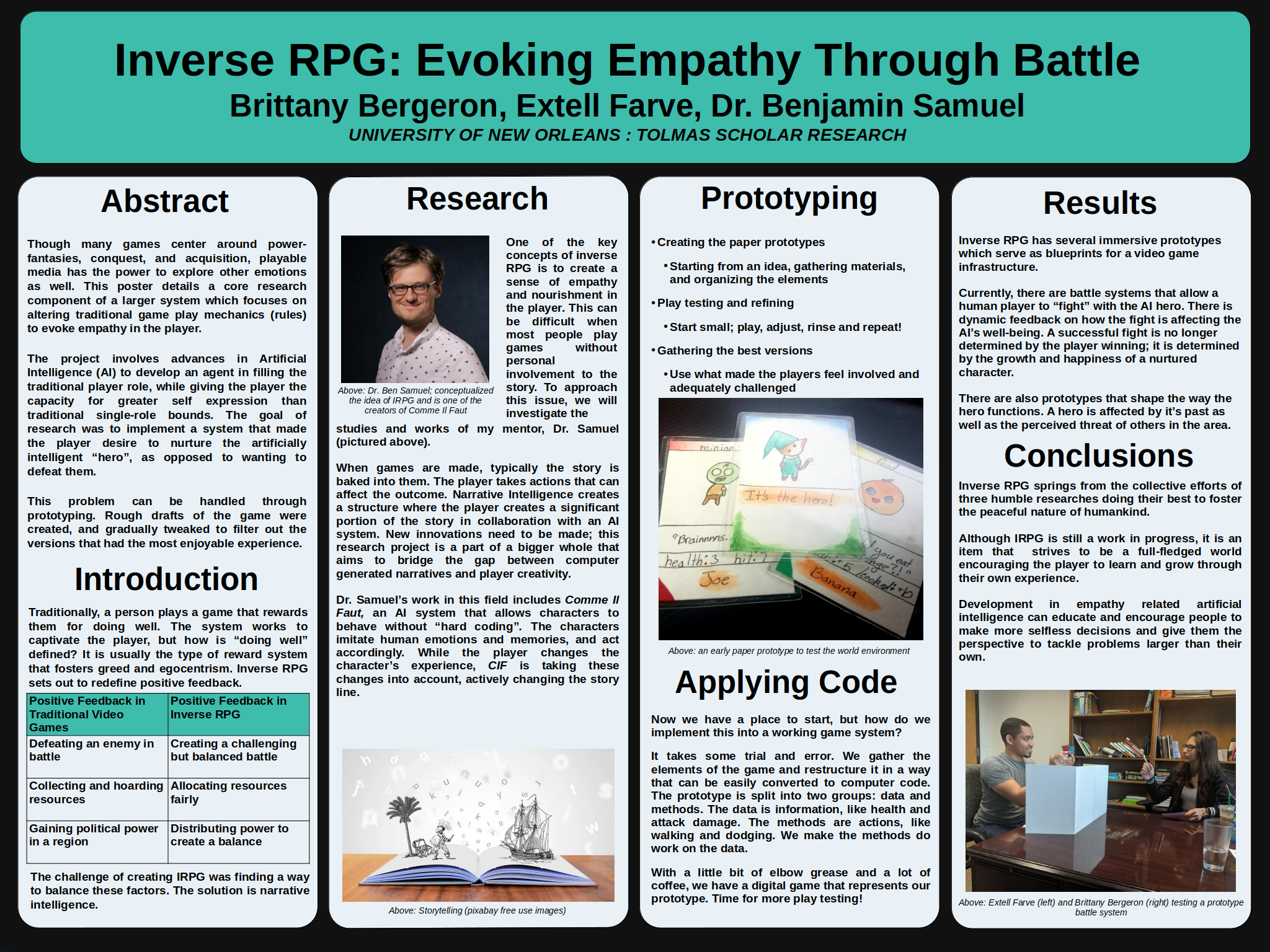
- Communication: presentation of research material to a scholarly audience
- Research: extensive reading into project material and construction of final report
- Networking: meeting with experts in the field, as well as students with varying acedemic research backgrounds
